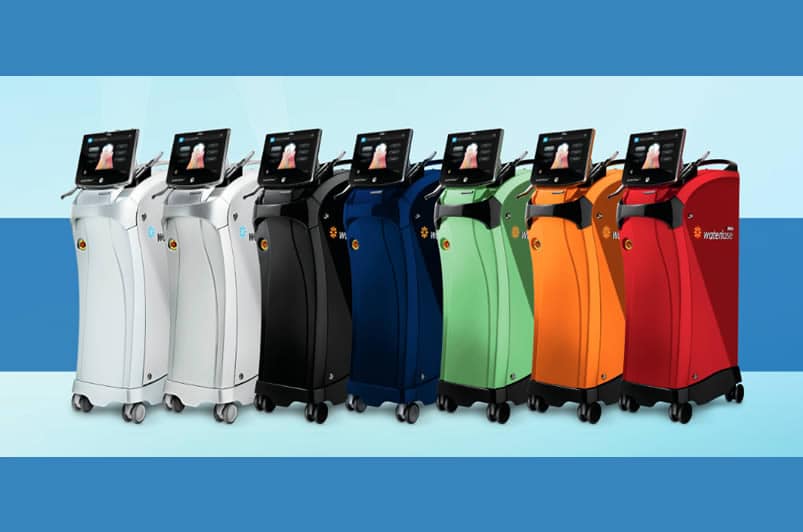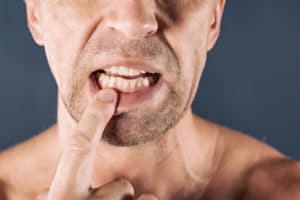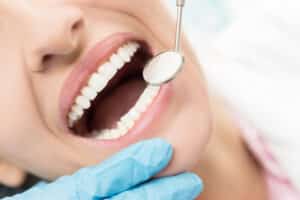BIOLASE® Dental Lasers in Pasadena, TX

Lasers are replacing traditional tools in many areas of medicine, and dentistry is no exception. BIOLASE® dental lasers allow most procedures to be performed with minimal drilling, and often without anesthetic. Using a patented process called hydrokinetics, the laser energizes a stream of water capable of removing both hard and soft tissue and eliminates the need for a needle, drill, or scalpel.
Types Of BIOLASE Dental Lasers
BIOLASE water lasers provide minimally invasive dental procedures. Its three main systems are the WaterLase iPlus, the Waterlase MDX, and the Waterlase MD. The WaterLase iPlus is the most powerful of the three systems and has the greatest number of features. According to the manufacturer’s website, the dual-wavelength WaterLase iPlus is the world’s most advanced all-tissue laser; the WaterLase MDX is the ideal system for pedodontists, periodontists, and endodontists; and the WaterLase MD is the world’s most widely used all-tissue laser system.
BIOLASE water lasers are used to perform the following procedures:
- Decay removal
- Cavity preparation
- Root canal
- Etching
- Bone and soft-tissue procedures
Benefits Of BIOLASE Dental Lasers
Benefits of using BIOLASE dental lasers rather than traditional methods include:
- Reduced heat and vibration
- High precision
- Little-or-no need for anesthetic
- Little-or-no bleeding
- Less post-operative swelling
- Fewer medications/antibiotics required
BIOLASE laser technology means that several procedures can be performed during a single appointment. Patients can often be treated without needing to be referred to a specialist.
Who is a good candidate for BIOLASE laser dentistry?

Still, if there are problems with the strength of your teeth, you may not be a good candidate for laser dentistry. Plus, lasers cannot be used on teeth that have silver amalgam fillings.
How does BIOLASE laser dentistry work?
The first lasers were used in dentistry in 1994, but the technology has continued to evolve and improve. When Dr. Covell felt it a good fit for his patients, he added lasers to his practice.
The word laser is actually an acronym for “light amplification by the stimulated emission of radiation.” Our BIOLASE laser creates light energy in a single wavelength that makes a very focused beam. This laser light produces a reaction when it hits tissue, allowing Dr. Covell to remove or reshape the tissue.
Our BIOLASE water lasers have three main systems: the Waterlase iPlus, the Waterlase MDX, and the Waterlase MD.
We’ve added lasers to various traditional dental practices to improve the treatment of both hard- and soft-tissue problems. When it comes to soft-tissue applications, the Waterlase wavelength is absorbable by water and hemoglobin (the oxygenating protein found in the blood), so it gives Dr. Covell the ability to precisely cut, coagulate, ablate, and vaporize targeted soft tissue. This is invaluable for procedures such as gum contouring.
We use the Waterlase MDX or iPlus for hard-tissue procedures, such as the removal of tooth decay, preparation of the cavity before filling, tooth preparation before applying sealants, as the activator for teeth whitening products, and other uses.
What Makes BIOLASE® Laser Dentistry Different from Other Dental Procedures?
Typically, when a dentist needs to remove decay from a tooth, they do so using a dental drill. This instrument is effective but it sends vibrations through the tooth into its nerves, which could cause discomfort that requires medication for a day or two. When a dentist must perform gum surgery or other minor surgical procedures, they typically cut soft tissue using a scalpel. This is done with great care, but it results in bleeding and also poses a risk of infection. The BIOLASE® laser technology is designed to reduce or eliminate the need for traditional dental techniques. With hard and soft laser settings, BIOLASE®can make nearly any dental procedure gentler, more accurate, and less risky.
How Should I Prepare for My BIOLASE® Procedure?
If your procedure has any special requirements, we will let you know in advance. That said, there are rarely any precautions that need to be taken before undergoing laser dentistry.
Is There Any Kind of Sedation or Anesthetic During a BIOLASE® Procedure?
You may still receive a quick injection of local anesthetic in the treatment area, even if your dentist incorporates the BIOLASE® laser into your procedure. We’ll discuss this ahead of time so you are not wondering what you should expect. Rest assured that your comfort is our top priority. That’s one of the reasons we’ve equipped our office with this laser technology!
Are There Foods or Drinks I Should Avoid After Laser Treatment?
Your aftercare instructions will relate more to the procedure you have done than the use of the dental laser. In fact, your restrictions may not last as long as they would with traditional dental techniques! In general, your post-treatment limitations may revolve around biting or chewing hard or sticky foods. Hard foods, in particular, may cause discomfort or may damage the work your dentist has just done. Hot and cold foods might also need to be avoided for a short time if you experience any sensitivity. If needed, you can take an over-the-counter pain reliever.
How Should I Care for My Teeth After My Laser Procedure?
After your laser procedure, you can expect to care for your teeth very similarly, if not exactly like, you normally do. This will depend on the nature of your treatment. For example, if we use BIOLASE® to remove decay before applying a filling to a tooth, you might resume brushing and flossing normally the same day. If you undergo laser gum therapy, your oral care might change for a short time. We will make sure that you know what to do and what not to do after your treatment by providing you with clear instructions. If you have any questions after receiving laser dentistry treatment, please contact our office for friendly assistance!
Is there any recovery after BIOLASE laser dentistry?

Is BIOLASE laser dentistry safe?
Lasers are taking an increasingly prominent role throughout medical and dental care. In many ways, they are actually safer than manual techniques such as gum contouring with a scalpel. This is because the laser energy instantly closes the incisions, instantly disinfects the wound, and creates a perfect incision that heals more quickly. Plus, it does this with little or no pain.
Is BIOLASE laser dentistry painful?
You’d think the power of laser energy would be painful when used on the gums or a decayed tooth, but it isn’t. Because the laser wavelengths are absorbable by water and hemoglobin, the laser energy can instantly vaporize infected gum tissue without the need for a scalpel. And because the energy instantly coagulates the blood vessels and seals nerve endings, there is dramatically less pain and usually, the incisions don’t require sutures.
Are there any side effects with BIOLASE laser dentistry?
The only real risks or side effects that can occur with laser dentistry procedures is when you’re dealing with a practitioner with inadequate training and experience using a laser. Then there are chances of gum damage.
With Dr. Covell, this isn’t a problem. Before adding the BIOLASE platform to our practice, Dr. Covell thoroughly researched the data and outcomes. He also has received extensive training on all three systems of the BIOLASE Waterlase platform. In fact, the precision of the laser energy is actually safer than that of a scalpel. Also, considering the decreased bleeding and lack of a need for sutures, the risks of infection are dramatically lower when using the BIOLASE laser.

